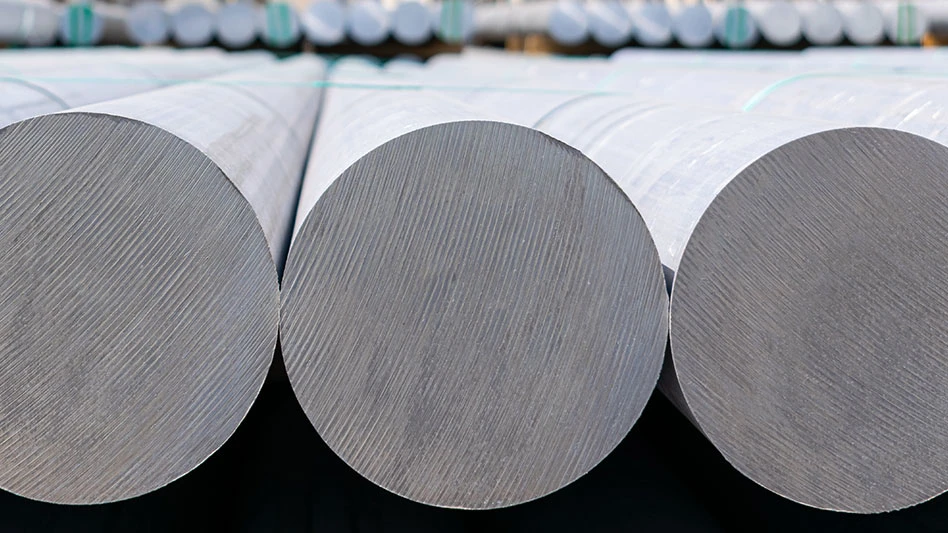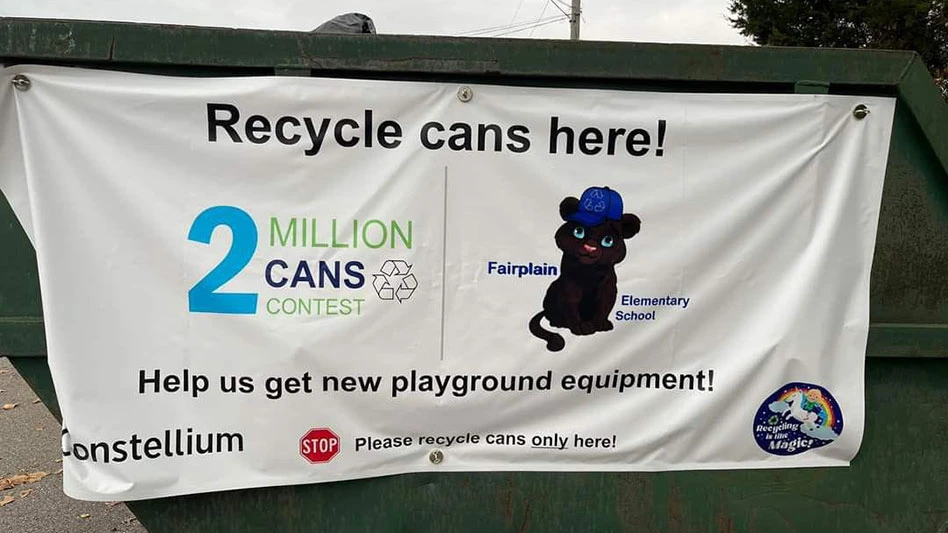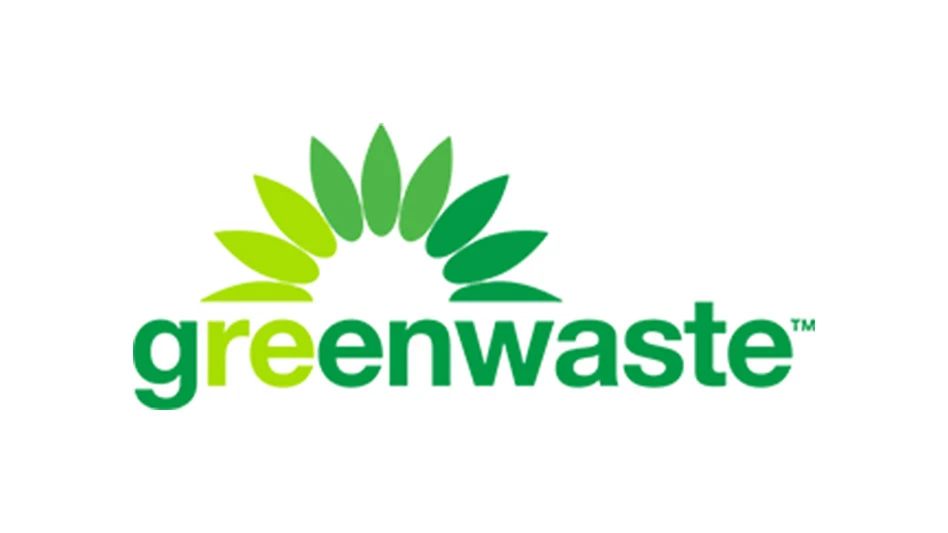
For many material recovery facilities (MRFs), recovered fiber makes up the bulk of their inbound material streams. However, changing material streams and quality requirements have led many MRF operators to invest in and upgrade their optical sorters to improve their recovered fiber.
Bill Keegan, president of Shakopee, Minnesota-based MRF operator Dem-Con Cos., says the fiber in inbound material streams poses challenges for MRF operators.
“Mixed paper represents a large portion of what we process—about 40 percent of the inbound stream—but it’s only a small portion of the revenue,” he says.
While mixed paper may not be a money-maker, Keegan says it’s still essential that MRF operators figure out how to make the highest quality mixed paper they can to be able to ensure movement to mills.
A few years ago, Keegan says Dem-Con decided to make several major investments designed to clean up its recovered fiber and to address the changing material stream, increasing contamination and more stringent mill quality standards. In 2017, the company invested $1 million in a FiberMax optical sorter manufactured by MSS Inc., Nashville, Tennessee, to remove recovered fiber from the MRF’s container line. Then in 2018, Dem-Con invested an additional $2 million in two MSS FiberMax optical sorters to further clean up the recovered fiber stream.

Keegan says these investments enabled his company to go from 2 percent contamination in its recovered fiber bales to 0.5 percent contamination at a line speed of about 25 tons per hour (tph).
“People sometimes get lost in the fact that it doesn’t make economic sense to clean paper up,” he adds. “But it goes beyond economics. Facility operators need to remember that [mixed paper] might make up about 40 percent of your inbound, so you need to be able to process that efficiently regardless of price in order to move it to end markets. Markets can be challenging, but the facilities that have the highest quality are going to be successful in moving product to market.”
In addition to employing optical sorters, a few MRF operators Recycling Today connected with share other best practices for improving recovered fiber quality.
Audit the inbound
Before investing in equipment to improve fiber sorting, Bob Cappadona, vice president of Casella Recycling LLC, a business segment of Casella Waste Systems Inc., Rutland, Vermont, says teams at Casella’s MRFs perform audits on inbound and outbound material streams to help determine the best processing solution.
“I can’t tell you how important it is to do audits coming in the door,” Cappadona says. “We do inbound audits and give feedback to our customers [on contamination levels]. Then we do audits on our finished product at each of our MRFs. Based on that feedback and items you see on the back end, we can determine the equipment we need or [the] design to implement to improve the quality.”
It’s also important to control inbound material in the first place. Keegan says Dem-Con makes it clear to its customers that it will not accept prebaled material to help limit contamination.
He says it’s also important to have haulers communicate to customers what materials are acceptable in their curbside bins. “We work with haulers to educate consumers at the curb on what can and cannot go in the recycling bin.”
Equipment upgrades
At most of Casella’s MRFs, Cappadona says recovered fiber passes through either a disc screen or a ballistic separator and then it moves to an optical sorter to remove prohibitives.
However, he says this setup may not work at all MRFs. “In general, we use both of these technologies—I think screens are great for extracting prohibitives and, then if you want to clean it up further, I believe an optical is nice to produce a cleaner product,” he says. “But every MRF is different by design. One particular MRF might be better off with just a screening process for its fiber line, but another MRF may be better off with just an optical sorter to extract prohibitives or cardboard when making a news grade.”

Norm Kraft, president of Niagara Falls, Ontario-based Niagara Recycling, says MRFs also should consider how fiber is fed to optical sorters. “It’s very important that you have the proper feeder unit before the conveyor so that everything gets separated along the width of the conveyor,” he says. “If the whole belt isn’t used, you’re wasting your optical.”
Kraft adds that he is planning to add the DeftAir system supplied by Van Dyk Recycling Solutions, Norwalk, Connecticut, on the top of the accelerator conveyors to ensure that material sits flat on the belt as it approaches the optical sorter. He says this also will allow belt speeds to be increased by about 30 percent.
“By doing that, it will provide improved separation of cardboard, boxboard and plastic from newsprint on the conveyor belt, resulting in better ejections,” he says. “Singularization is critical to achieving the highest level of ejection purity. We hope that these technological improvements will ultimately allow us to improve the quality of our newsprint such that we can reduce our dependency on export markets and sell more to domestic markets that require higher quality.”
Beyond equipment
In addition to investing in technology, Keegan says manual sorting is still important to reduce contamination in recovered fiber streams.
“You have to sort, sort again and sort again,” he says. “That’s really the key to getting the product clean.
“When we looked at investing in our fiber cleaning line, we were looking at getting at that 0.5 percent level,” Keegan says. “The industry at the time was saying it was impossible to get there and that China would not hold that standard. But we’ve seen that standard hold and have seen China tighten restrictions.
“In general, we use both of these technologies—I think screens are great for extracting prohibitives and, then if you want to clean it up further, I believe an optical is nice to produce a cleaner product.” – Bob Cappadona, vice president, Casella Recycling LLC
“Ahead of the curve, we saw that and wanted to invest not only in quality but also to maintain movement in markets,” he continues. “When we looked at what it takes to do that, we looked at making sure we added technology and equipment but also maintaining the ability to have manual quality control workers at the end.”
Keegan says that while Dem-Con considered further automating its sorting process, that option seemed risky in light of changing quality standards.
“With not knowing where changing standards were going to end up, we wanted manual sorting at the end of the line. You invest in technology, but you also need to maintain quality control,” he says. “If we don’t have manual sorters, we can have 2 percent contamination levels,” but, to get the 0.5 percent level, that extra manual quality control step helps.
Regardless of the solutions a MRF employs, Cappadona adds that MRF operators need to make some form of investment to ensure they can sell high-quality fiber grades in today’s market.
“There’s an old saying in the industry—quality is king,” he says. “It’s the second most important item in our MRFs right after safety.
Cappadona adds, “Producing a superior quality most always opens the doors to further market options. And to find these markets, you most likely need to continue to reinvest to ensure to produce the quality that’s needed. If you are going to export material, you have to ensure you’re meeting quality standards. Downgrades [and] rejections overseas are very costly.”
Get curated news on YOUR industry.
Enter your email to receive our newsletters.

Explore the July 2020 Issue
Check out more from this issue and find your next story to read.
Latest from Recycling Today
- SAFE calls for export ban on certain types of aluminum scrap
- Aqua Metals reports Q2 results
- Sourgum launches services in Mississippi
- PLASTICS provides FFRA, staffing updates
- Metals Innovation Initiative announces competition to address problems in Kentucky’s metals industry
- Dow, Mura Technology cancel chemical recycling plant in Germany
- Brightmark, Lewis Salvage partnership processes 1M pounds of medical plastics
- US paper recycling rate, exports down in '24





